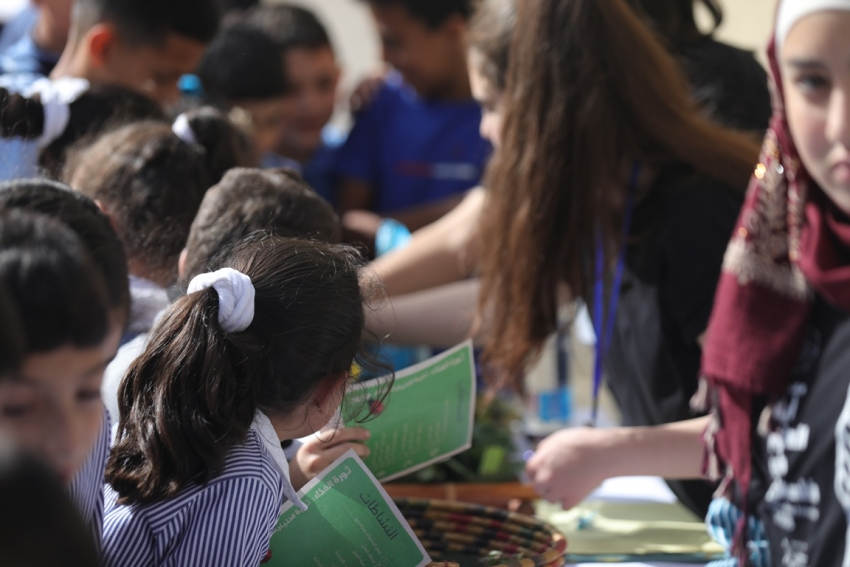
25 October 2018
On their way to the Ramallah Recreational Complex, school students lined up in preparation to delve into a space full of experiments.
In the context of the Science Days Palestine (SDP) 2018 Festival, happiness created by the joy of experimentation was visible on the movement of male and female students, who moved around from one experiment to another like bees flying from flower to another in the field.
Subconscious attention
The SDP 2018 Festival’s theme revolves around the food crisis, expected to take place in 2050. Hence, the Bee Game can be started. The game was widely approved by students, aged 14-16 years. Competition was the most important motive for participants in the game. This motive soon turned to protecting the Bee Cards, which used to pose a threat to the bees. Unconsciously, a sense of attention sneaked into the minds of participants, and later found its way to their behaviour and movements.

In addition, students examined a beehive through glass, inquiring about the importance of bees for both human beings and the environment. They also learned how to distinguish between the species of bees, the function of each species, and the material stored in honeycombs.
In the collection and study of insects corner, the question “Where did you bring the insects from?” was raised. Catching small and big insects was a strange and unfamiliar experience. The idea attracted students when they inspected insects using lenses and microscopes.
Post-experiment recognition
Observation, inquiry and experimentation were the tools students used to reach findings. The question “How?” was prevalent in students’ inquiries: “How do plant seeds move around? How can the wind move the seeds? How can seeds grow in another place? How do seeds stick to clothes so people contribute to moving them?”
In the Agriculture area itself, planting seeds in a cylinder-shaped newspaper was an unfamiliar method for students. Therefore, they asked questions before experimenting cultivation: “Why is it the newspaper in particular? Can seeds other than lentils be planted in the newspaper?” To answer their question “How do the growing lentil leaves taste?”, students used their own sense of taste to see how they tasted.
Children made their own cups of old newspapers. Having asked for help to implement the experiment, they put and watered the seeds in these cups. After they were done, questions rushed in: “Will the plant grow? Will it make it? Do we only have to wet the newspaper or water the lentils too?”
Children also tried to understand the relation between agriculture and fish. Lettuce seedlings were lying on top of a fish aquarium. In the context of explaining the experiment, students had to touch the seedlings and realise that fish waste served as organic materials; i.e. a fertiliser. Therefore, the fish aquarium was a host environment of plant seedlings.

Curiosity and a decision
Three experiments in a row were sufficient to arouse curiosity and inquiries. These undermined information which was taken for granted.
The speed by which tea turns from brick red into black after iron sulphate is added was a shock to students, giving rise to a wave of inquiries and questions. The experiment was meant to warn against having tea on breakfast by the students, who said they loved tea as a hot drink.
When lemon is added, tea restores its former condition. Those who loved tea said that lemon was a good reason to keep on drinking tea. However, they did not prefer the new taste after lemon was added. They inquired: “Can we drink tea if we add lemon? Does lemon help the body to absorb?”
In addition, the cornflakes experiment disapproved the information that cornflakes is useful. The experiment showed that cornflakes includes iron filings, which appear when it is ground and soaked in water. When moving a magnet through, filings in the cornflakes are attracted to the magnet. A little ring of faint black gathers around the magnet. It is iron filings!
In another experiment, adding energy drinks to milk caused an interaction that resulted in separating milk into two parts: a transparent liquid in the bottom and a thick butter-like layer on top. The result was amazing for those students who were standing around. Still, some students announced they would keep up having energy drinks, which ruined the nutritional value of the milk.
